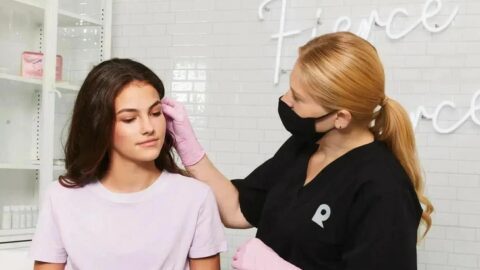A company selling headsets may find it logical to organize its e-Commerce site by types of headsets. But many consumers do not know enough about the various headset styles to quickly and easily find what they need.
Visitors to Headsets.com were getting lost as they navigated the site. Google Analytics was showing unusually high bounce rates from secondary pages, indicating that customers were not getting very far in the buying process.
“When running user tests we noticed over and over again that people were unsure about where to click to find the headset that was right for them,” explained Mike Faith, CEO of Headsets.com. “Our navigation used terms that seemed really clear to us, but left many testers scratching their heads. We could hear the hesitation in their voices as they hovered over our navigation choices. It became very clear that they wanted to find the right headset for them, but they weren’t sure how.”
Advertisement
While Headsets.com gained some insights by recruiting user test participants on Craigslist, the process was inefficient, Faith noted. Testers did not always show up and it took several days to compile the results.
The eTailer turned to UserTesting.com to streamline the process of gathering user feedback to improve the customer experience. The usability testing system, which Headsets.com has had in place since 2009, has prompted adjustments to the web site over the years, according to Faith.
“The most important feature to us is just how fast and easy it is,” Faith said. “It only takes a couple of minutes to set up a test and then we have results in an hour. It saves us time and money, and we’re always impressed with the insights we get.”
Testing Leads To Higher Conversion Rates
In one instance, Headsets.com used UserTesting.com to run an A/B test, with the B group being presented with a different navigation process than what was on the web site at the time. In the B scenario, visitors were asked to first identify the type of phone they planned to use with the headset. This had an immediate impact on the customer experience and resulted in a 10% increase in the eTailer’s conversion rate, according to Faith.
This adjustment led to other changes on the site, Faith noted. “For example, we added icons to our navigation and also added a separate tool that helps our customers find the right headset for them with just a few clicks.”
Some of the most valuable feedback has come from asking users to perform simple tasks on the site, Faith explained. “We’ll ask them to look for a headset to use with their office phone, add it to their cart, and then proceed as far in the checkout process as they possibly can. I realize this sounds ridiculously simple, but it always produces great insight. We’ve been watching these for years and we’re still learning by watching users.”
Faith emphasized the need to continuously improve the customer experience. “For us, it’s not about one particular site design; it’s about a steady improvement to give our customers an even better experience. Some weeks a user test will spark an idea for new navigation, and other weeks it will spark an idea for an entire redesign. It depends on what we see in the user tests and what we think will be best for our customer.”








